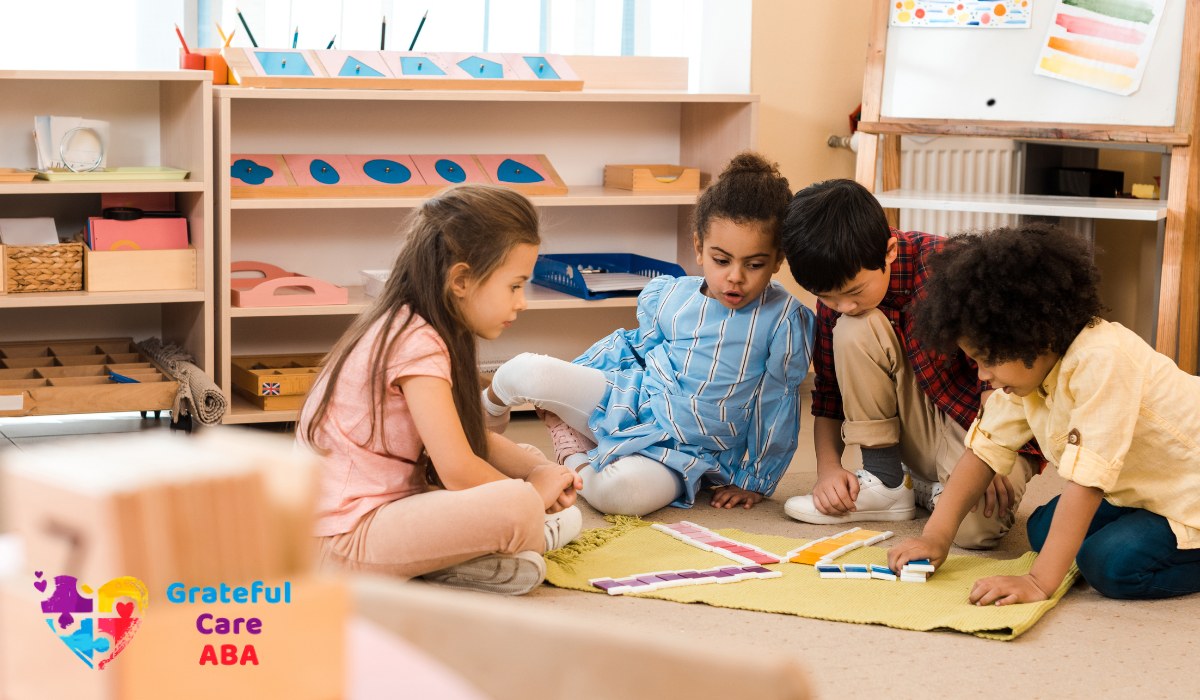What Parents Should Know About IEPs and Autism
Learn what parents should know about IEPs and autism, from planning personalized goals to ensuring your child gets the support they need.


Key Points:
- IEPs (Individualized Education Programs) outline a personalized education plan for students with autism, ensuring their unique needs are met.
- Parents play an active role in shaping goals, services, and accommodations within the IEP process.
- Understanding how to advocate effectively helps ensure your child receives the right support in school.
Every parent wants to see their child thrive in school. For children on the autism spectrum, success often depends on having the right support in place. That’s where an Individualized Education Program (IEP) comes in. The IEP serves as a roadmap that helps educators, therapists, and families work together to provide the tools a child with autism needs to learn effectively and grow.
Below, we’ll explore everything parents should know about IEPs and autism—from how they’re developed to how you can make sure your child gets the right help every step of the way.
Understanding IEPs: What They Are and Why They Matter
An IEP is a legal document under the Individuals with Disabilities Education Act (IDEA) that outlines how a public school will meet a student’s specific learning needs. For a child with autism, this plan details academic, behavioral, social, and communication goals. It also specifies accommodations, related services, and supports the school must provide.
Unlike a general education plan, the IEP is personalized. It recognizes that autism affects every child differently—some may need speech therapy, while others benefit more from sensory breaks or behavioral interventions.
At its heart, an IEP ensures equitable access to education. It’s not about lowering expectations; it’s about giving children the support they need to reach their full potential.
The IEP Process for Children with Autism
Getting an IEP involves several steps, each designed to ensure your child receives the right level of support. Here’s a detailed look at how it typically unfolds:
1. Evaluation and Eligibility
The process begins with a comprehensive evaluation conducted by the school. This may include assessments in communication, cognition, behavior, and academics. Parents can request an evaluation at any time if they suspect their child may need additional support.
For autism, evaluators look at how social communication challenges, repetitive behaviors, or sensory sensitivities affect classroom participation. Once the evaluation is complete, a team determines whether your child qualifies for services under the category of Autism Spectrum Disorder (ASD).
2. IEP Meeting and Goal Development
If eligible, the school schedules an IEP meeting that includes teachers, specialists, administrators, and you—the parent. Together, you’ll create a plan outlining specific goals and the support needed to achieve them.
These goals should be SMART—Specific, Measurable, Achievable, Relevant, and Time-bound. For instance, a goal might state, “The student will initiate greetings with peers in three out of five opportunities using verbal or nonverbal communication.”
3. Implementation and Monitoring
Once the IEP is in place, teachers and therapists begin implementing the supports and strategies outlined in the plan. Progress is tracked regularly, and updates are shared with parents through progress reports or follow-up meetings.
If a strategy isn’t working, adjustments can (and should) be made. An IEP is a living document, meant to evolve as your child’s needs change.
5 Key Components Every Parent Should Understand
Before diving into the next IEP meeting, it helps to know what each section of the document means. Understanding these parts gives you a clearer picture of how your child’s education is being structured.
1. Present Levels of Performance (PLOP)
This section summarizes your child’s current skills—academic, social, behavioral, and emotional. It provides a baseline for measuring growth. For children with autism, it might include communication abilities, sensory triggers, and social interaction patterns.
2. Annual Goals
These outline what your child should accomplish in a year. They often include objectives related to academics, self-regulation, communication, or social skills.
3. Related Services
Many children with autism benefit from speech therapy, occupational therapy, or applied behavior analysis (ABA) therapy. These services are integrated into the school day when included in the IEP.
4. Accommodations and Modifications
Accommodations adjust how your child learns (e.g., extra time on tests), while modifications change what they learn (e.g., a simplified reading passage). For a student with autism, accommodations might include visual schedules, noise-canceling headphones, or small group instruction.
5. Transition Plan
For students aged 16 and older, the IEP includes a plan for life after high school—college, vocational training, or employment. Transition goals often focus on independence and community participation.

Common Challenges and How to Overcome Them
Even with good intentions, the IEP process can sometimes feel overwhelming or adversarial. Here are some of the most common pain points parents face—and how to navigate them effectively.
1. Disagreements with the School Team
It’s not uncommon for parents and schools to disagree about services or placement. Stay calm, document everything, and request another meeting. You can also request mediation or an independent educational evaluation (IEE) if needed.
2. Vague or Unmeasurable Goals
Goals should be clear enough that anyone can track progress. Avoid wording like “will improve communication skills.” Instead, ask for measurable outcomes, such as “will use a full sentence to request a preferred item during three consecutive sessions.”
3. Inconsistent Implementation
Sometimes, what’s written in the IEP doesn’t happen consistently in the classroom. Regular communication with teachers and data reviews help ensure accountability.
How ABA Therapy Supports IEP Goals
Applied Behavior Analysis (ABA) therapy often complements the goals set in an IEP. ABA focuses on improving communication, social interaction, and learning through positive reinforcement and evidence-based strategies.
Here’s how ABA therapy can align with school-based supports:
- Enhancing Communication Skills
ABA techniques help children develop functional communication—whether through speech, sign language, or AAC devices—so they can express needs and participate more fully in school activities. - Reducing Problem Behaviors
Many IEPs include behavior intervention plans. ABA identifies triggers, teaches replacement behaviors, and reduces disruptive actions that may interfere with learning. - Building Social Understanding
ABA can teach perspective-taking, play skills, and social turn-taking, allowing children to connect better with peers. - Promoting Independence
ABA programs often target daily living and classroom routines—like following instructions, organizing materials, or transitioning between activities—helping children gain confidence and autonomy.
When implemented consistently across school and home environments, ABA therapy reinforces what a child is learning at school, promoting faster and more stable progress.

Tips for Parents: How to Advocate Effectively
Navigating the IEP process can feel complex, but being informed and proactive makes a significant difference. Here’s how you can take an active role in your child’s education:
1. Learn the Law
Understand your rights under the Individuals with Disabilities Education Act (IDEA). Knowing what schools are required to provide helps you advocate confidently.
2. Keep Organized Records
Maintain copies of evaluations, meeting notes, and progress reports. Having documentation ready helps you track progress and address issues promptly.
3. Communicate Regularly
Build a collaborative relationship with your child’s teachers and therapists. Regular communication ensures that strategies are aligned and concerns are addressed early.
4. Bring Support to Meetings
You’re allowed to bring an advocate, therapist, or even an ABA provider to meetings. They can help interpret technical terms and offer insights into your child’s behavior and learning needs.
5. Review and Revise
Your child’s needs will change over time. Schedule periodic reviews to ensure that the IEP continues to reflect their current abilities and challenges.
Wrapping Up: Partnering for Your Child’s Success
An IEP isn’t just a document—it’s a collaborative tool for unlocking a child’s potential. When families, educators, and therapists work together, children with autism can make meaningful strides in both academics and personal development.
If you’re looking for added support in reinforcing your child’s IEP goals, Grateful Care ABA can help. Our compassionate team provides personalized ABA therapy in Indiana, Tennessee, Georgia, North Carolina, Virginia, and Arizona, focusing on skill-building, communication, and behavior management that align seamlessly with your child’s educational plan.
Empower your child with the consistency and care they deserve—contact us today to learn how we can support your family’s journey.
Apply Now
At Grateful Care ABA, we are proud to offer the best ABA therapy services in Indiana. Armed with a team of skilled Board Certified Behavior Analysts (BCBAs), we bring years of experience to the table, making us the preferred provider for ABA therapy in our community.
Understanding that every child with ASD is unique and has unique goals and objectives, our ABA therapists carefully craft personalized ABA therapy plans that are tailored to meet the specific needs of each child. Whether your child needs help with reducing maladaptive behaviors, your child needs IEP support at school, you want your child to be self-sufficient at home, or something else, we use ABA therapy to work diligently toward specific goals. Together we can make a difference in your child’s life!
Contact us today to connect with an ABA therapist and learn more about ABA therapy solutions for your child.

.jpg)
.jpg)




.jpg)
.jpg)
.jpg)

.jpg)
.jpg)
.jpg)
.jpg)
.jpg)
.jpg)
.jpg)


















































































